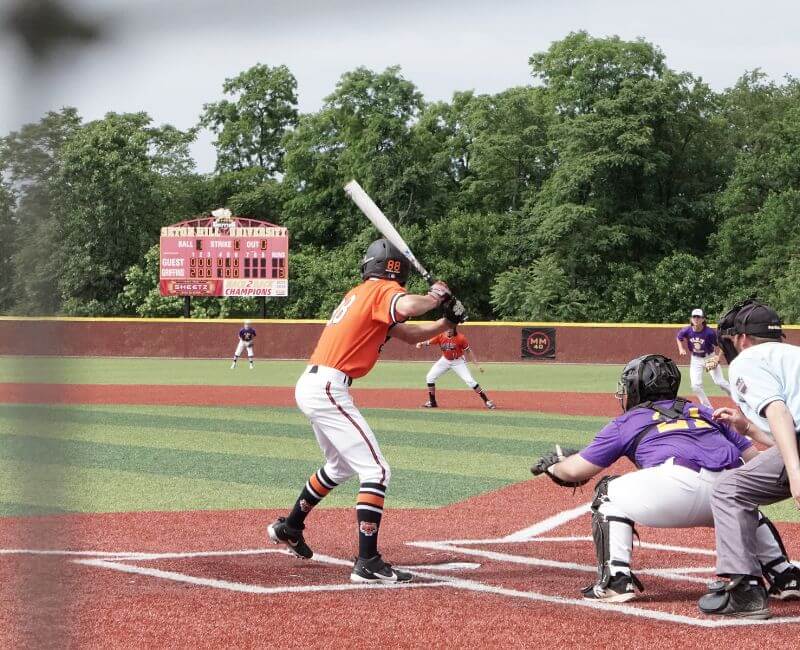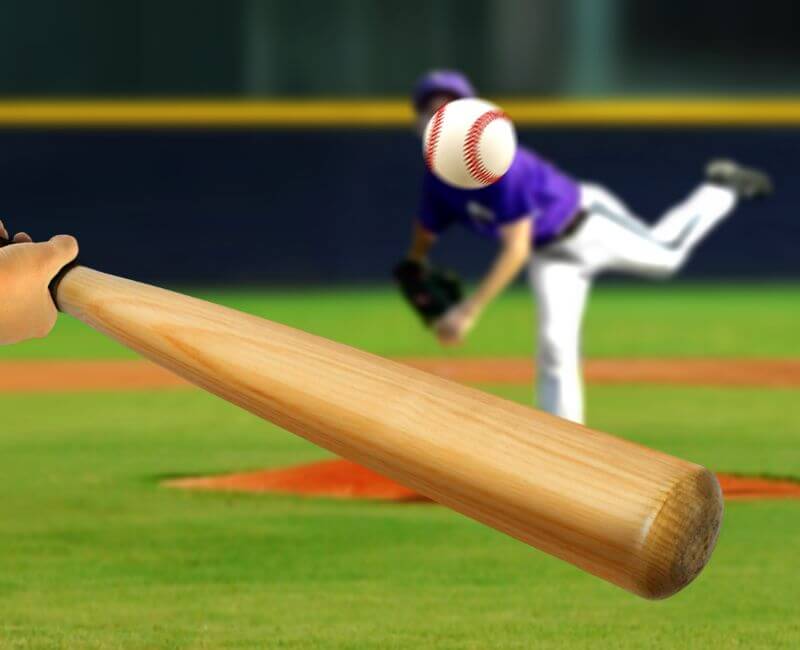Last Updated on September 12, 2023
WAR, which stands for “Wins Above Replacement,” is a powerful statistic for judging a player’s performance. Though this is not an official tool to measure a player’s performance, many statisticians and fans take this quite seriously.
If you’re unfamiliar with WAR in baseball or want a refresher, Here I will discuss all the important elements. Let’s dive in.
What is WAR (Wins Above Replacement) in Baseball

Wins Above Replacement or WAR is a frequently used statistic in baseball.
WAR is an all-encompassing metric that compares a player’s impact to that of a hypothetical replacement-level player in terms of his team’s success. It’s a way to put a number on a player’s contribution to the success of his team.
When calculating a player’s WAR, many factors are considered. For position players, these include hitting, fielding, baserunning, and pitching.
WAR is a helpful metric since it compares a player’s stats to those of a “replacement level” player, who is essentially an average player who is always available.
A greater WAR indicates a player is more valuable because of the impact they have on the success of their team.
A player who contributes more wins than he takes away has a positive WAR. When a player has a negative WAR, it means that they are performing at or below the level of a replacement player and may be hurting their team’s chances of winning.
WAR provides a consistent way to measure the contributions of players across teams, positions, eras, and leagues. By taking into account more than simply static metrics like batting average and home runs, it aids in the selection of the league’s MVP.
To further analyze a player’s strengths and flaws, WAR can be separated into offensive and defensive components. This breakdown sheds light on a player’s batting average, power, on-base percentage, stolen base percentage, and defensive ability.
The History of WAR
Bill James, a famous baseball statistician, introduced the concept of Win Share in the 1970s. The target was to identify a player’s impact on a win. This was the foundation of WAR.
WAR is not an established statistic. Therefore, we see multiple versions of WAR.
Over the years, other statisticians and analysts refined James’ work and developed more sophisticated methods for calculating wins above replacement level. The introduction of advanced metrics like on-base percentage (OBP), slugging percentage (SLG), and defensive metrics greatly enhanced the accuracy of these calculations.
Today, there are multiple versions of WAR used by different sources, such as Baseball-Reference and FanGraphs. These variations account for discrepancies in data sources and statistical methodologies.
What Components are Used in WAR Calculation?
One of the most important factors in determining WAR is offensive play. The batting average, on-base percentage, slugging percentage, home runs, and RBIs are all part of this category. A player’s offensive production directly correlates to their WAR.
A player’s defensive prowess is also a major factor in his WAR. Defensive performance at each position is measured using statistics such as defensive runs saved and ultimate zone rating. The value of an individual can be significantly increased by developing a formidable defensive presence.
WAR also takes a player’s base running skills into account. In assessing a player’s impact on the base paths, we take into account stolen bases, additional bases taken on hits or outs, and other base-running statistics.
Further, when calculating WAR, positional adjustments are factored in. There are higher standards for, or more substantial obligations associated with, some jobs. When opposed to outfielders or first basemen, shortstops often have more rigorous defensive responsibilities.
The amount of time spent actually playing is also considered. It stands to reason that a player’s WAR would be higher if he saw the field for a large portion of each game.

How do you Calculate WAR?
The technique of determining Wins Above Replacement (WAR) is complex and complicated, involving several different factors. Even though several references may give you somewhat different formulas, I will give you an overview of the most common approach.
1. Determine the replacement level: To begin, a performance standard equivalent to that of a replacement-level player must be established. To do this, teams frequently examine free agents and players from lower leagues. Their efficiency is used to establish replacement levels.
2. Calculate the player’s run value: The performance of a player is broken down into its constituent parts and then translated into run values. This includes things like hitting, fielding, baserunning, and pitching. Runs above/below replacement show how many more/fewer runs a player contributes/saves than a player of average skill.
3. Adjust for park factors: Park adjustments are implemented due to the fact that baseball stadiums range in size and layout. This guarantees that players can be fairly compared across ballparks.
4. Convert runs to wins: Then, a player’s win total is calculated as the sum of his or her runs batted in and runs saved. In most cases, this is accomplished by employing a runs-to-wins conversion factor, which may differ depending on the time frame under consideration.
5. Factor in positional adjustments: The defensive responsibilities and expectations placed on players vary depending on their position. WAR incorporates positional modifications to account for the varied nature of each role and the resources and responsibilities it requires. Defensive contributions from a shortstop, for instance, are valued higher than those from a first baseman.
6. Account for league and era adjustments: Players from different eras or leagues can’t be compared without considering the league or era they played in at the time. League-average run-scoring situations and changes in game conditions – many things are taken into account.
7. Combine offensive and defensive components: WAR is a metric that evaluates a player’s total performance by combining his offensive run value with his defensive contributions. The relative importance of offensive and defense might change depending on the criteria utilized.
8. Finalize the WAR calculation: The offensive and defensive parts are then added together, along with any other changes, to get the player’s final Wins Above Replacement value. Compared to a replacement-level player, this number shows how many wins the player has helped or saved.
WAR is a useful tool for analyzing players. However, different sources may utilize different algorithms and data inputs, resulting in tiny differences in WAR estimates. However, the general ideas above should explain WAR calculation.
Interpretation of WAR
When a player has a positive WAR, he or she has helped their team win more games than they would have with an average replacement player. If a player has a negative WAR, it means he or she has cost the team more wins than a typical bench warmer would.
When trying to make sense of WAR numbers for specific players, it’s crucial to keep things in perspective.
It’s possible, for instance, for a pitcher to have a high WAR despite making fewer offensive contributions than a position player because of how well he pitches.
It’s also important to avoid making direct comparisons between players from different eras based on WAR alone. Due to advancements in data collection and statistical analysis, WAR calculations have progressed over time.
Therefore, it may be misleading to compare the WAR values of players from various generations, either throughout their entire careers or over a single season.
While it’s true that some baseball fans place a disproportionate amount of weight on a player’s career or season-long WAR total, other characteristics, such as consistency and peak performance, are just as important.
The Significance and Impact of WAR
WAR’s capacity to make cross-positional comparisons is one of its primary strengths. WAR is useful for comparing pitchers, infielders, outfielders, and designated hitters since it gives a numerical value to each player’s offensive, defensive, and baserunning abilities.
With this information at hand, clubs can better organize their rosters and negotiate trades.
WAR also considers the larger picture by accounting for things like home-field advantage and league-average production. This prevents undue advantages or disadvantages for players based on factors outside their control.
It also helps give a clearer image of their worth in comparison to other players in the league.
In addition, WAR simplifies player evaluation by offering a single, easily digestible figure that captures a player’s overall contribution to victory across a variety of categories. In a time when data-driven decision-making is commonplace in baseball front offices, this is extremely helpful.
WAR has gained appeal among fans as they look for objective metrics with which to debate individual performances, in addition to its significance inside team management circles. When discussing specific seasons or contrasting players from different eras, it provides more context and conversation.
How do you calculate WAR for Pitchers?

Pitchers’ Wins Above Replacement (WAR) are determined by looking at a number of different statistics and comparing them to those of a replacement-level pitcher. Earned run average (ERA) and fielding independent pitching (FIP) are just two of the metrics used in the computation.
Analysts compare a pitcher’s stats to the league average to determine their WAR. Consider not only how well they can stop runs and generate outs but also how well their teammates help them out defensively.
FIP is an important component in determining a pitcher’s WAR since it evaluates a pitcher’s efficiency in terms of variables over which they have some measure of control.
Some of the stat used are strikeouts, walks, hit by pitches, and home runs allowed. As a result, factors like defense and luck are reduced.
To further account for the potential impact of different stadium dimensions on a pitcher’s performance, park adjustments are implemented. If the fences are lower or the weather is different at a certain stadium, for instance, batters may have an advantage.
Which WAR Calculation is More Common?
Baseball’s Wins Above Replacement (WAR) stat can be calculated in a few different ways. fWAR (FanGraphs Wins Above Replacement) and bWAR (Baseball Reference Wins Above Replacement) are two of the most used WAR computations among baseball statisticians and analysts.
It is generally agreed that fWAR, or FanGraphs WAR, is the preferred metric for modern baseball analysis. A player’s value above a generic replacement is calculated by factoring in their offensive and defensive statistics.
The Baseball-Reference Wins Above Replacement metric, or bWAR, has been around longer and is frequently viewed as more conventional. Defensive statistics like runs saved in the field and shifting positions are given more weight.
There are benefits and drawbacks to both fWAR and bWAR. Some baseball fans choose fWAR over other player evaluation systems because of the additional depth provided by metrics like weighted runs created plus (wRC+). Some people prefer bWAR because it uses tried-and-true metrics like batting average and earned run average.
It’s ultimately up to the user or the situation to decide between fWAR and bWAR. While both estimates provide insightful information about a player’s performance, they may arrive at slightly different conclusions due to differences in methodology.
What is Good WAR in baseball?
Good position players typically have a WAR of 2-3 or higher. This signifies that the player has contributed to the team’s success by around two to three wins over what could have been expected from a typical replacement player.
The average WAR for a starting pitcher is 5. This means the pitcher has helped his team win by around 5 games compared to what they would have won with a replacement-level pitcher. Throughout a season, l player would make a difference. A player with a WAR of 5 or above is exceptional and probably among the best in the league.
Pitchers’ WAR standards are often greater than those of position players because they have less of an impact on each game. Any pitcher with a WAR greater than 4 deserves high praise and may even be among the best in his team’s rotation.
Remember that these standards are not immutable but can change with the times and seasons. When determining whether or not a player has had a good season, it is important to consider factors beyond only their WAR, such as league-wide offensive and defensive contributions.
Criticisms and Alternative Metrics of WAR
Many believe it to be overly simplistic and dismissive of the many factors that contribute to a player’s performance.
One main argument against WAR is that there are numerous variants, each with its own formula and set of assumptions. When comparing players across multiple versions of the statistic, this might lead to discrepancies and misunderstanding.
Another complaint is that defensive measures, which can be very subjective and erroneous, make up a large portion of WAR. Some contend that WAR overestimates a player’s defensive value because it is based on a subset of defensive data.
Some baseball purists also maintain that older statistics like batting average and runs batted in should be given more weight than they now do. They think these numbers are more indicative of a player’s true impact on the game.
Analysts and statisticians have responded to these problems by developing new measurements. By adding new criteria or employing other methods, these alternates hope to compensate for WAR’s ostensible shortcomings.
Weighted Runs Created Plus (wRC+) is an alternative statistic that eliminates the impact of home field and league averages in favor of measuring offensive output. It shows how much better or worse a player is doing than average hitters in the league.
While wins above replacement (WAR) has become standard fare in baseball statistics, it’s crucial to remember that it has its limitations and look beyond it when assessing individual players’ effectiveness. Today’s baseball player evaluation discussions are made more interesting by the continuous dispute over the validity and accuracy of these analytics.
Which Baseball Players have the best WAR in History?
- Babe Ruth – WAR: 183.8
- Barry Bonds – WAR: 162.8
- Willie Mays – WAR: 156.4
- Ty Cobb – WAR: 151.0
- Hank Aaron – WAR: 142.6
- Roger Clemens – WAR: 139.4 (highest for a pitcher)
- Stan Musial – WAR: 139.3
- Ted Williams – WAR: 130.4
- Honus Wagner – WAR: 129.8
- Tris Speaker – WAR: 127.7
- Mickey Mantle – WAR: 120.3
- Lou Gehrig – WAR: 116.3
- Cy Young – WAR: 115.7 (second-highest for a pitcher)
- Eddie Collins – WAR: 114.0
- Greg Maddux – WAR: 116.8 (third-highest for a pitcher)
- Mike Schmidt – WAR: 106.9 (highest for a third baseman)
- Rickey Henderson – WAR: 106.8 (highest for an outfielder)
- Warren Spahn – WAR: 106.6 (fourth-highest for a pitcher)
- Tom Seaver – WAR: 106.3 (fifth-highest for a pitcher)
- Alex Rodriguez – WAR: 117.8
**keep in mind that WAR calculations may vary slightly depending on the specific version (e.g., fWAR, bWAR)
FAQs
Who has the highest career WAR in baseball history?
The all-time leader for career War is Babe Ruth, with an estimated 162-168 rWAR depending upon the source you consult, followed closely by Barry Bonds with around 164 fWAR according to FanGraphs calculations.
What are alternative metrics critics propose instead of using just War alone?
Some critics argue that advanced metrics like Weighted Runs Created Plus (wRC+) or Fielding Independent Pitching (FIP) provide additional insights into player performance beyond what traditional statistics offer.
Can WAR be used to predict future performance?
While WAR is a valuable metric for evaluating past performance, it is not a predictive statistic on its own.
What is the difference between fWAR and bWAR?
fWAR (Fangraphs Wins Above Replacement) and bWAR (Baseball-Reference Wins Above Replacement) are two different versions of the WAR metric, and they may use slightly different methodologies and data sources to calculate a player’s value.
Final Thought
WAR is only used for MLB players. It’s a very complex calculation with multiple versions. It can help teams and fans measure players from different eras also. So, what is your take on this tool of statistics? For me, I like this stat but never take this too seriously.
Read More:
What Is The Dropped Third Strike Rule
What Is The Baseball Mercy Rule?
What Is The Pennant In Baseball?
What is a Sacrifice fly in Baseball?

Hello everyone. My name is Jason Butler, and I live in California, America. I was a professional AAA Minor League Baseball player. I lost my chance of playing MLB for injury issues, but I did not lose my love for baseball. I attended the coaching training program and am now working as a coach in a small school in San Diego.
I always love to share my experience and knowledge if that can help you. Play baseball, and stay fit.
